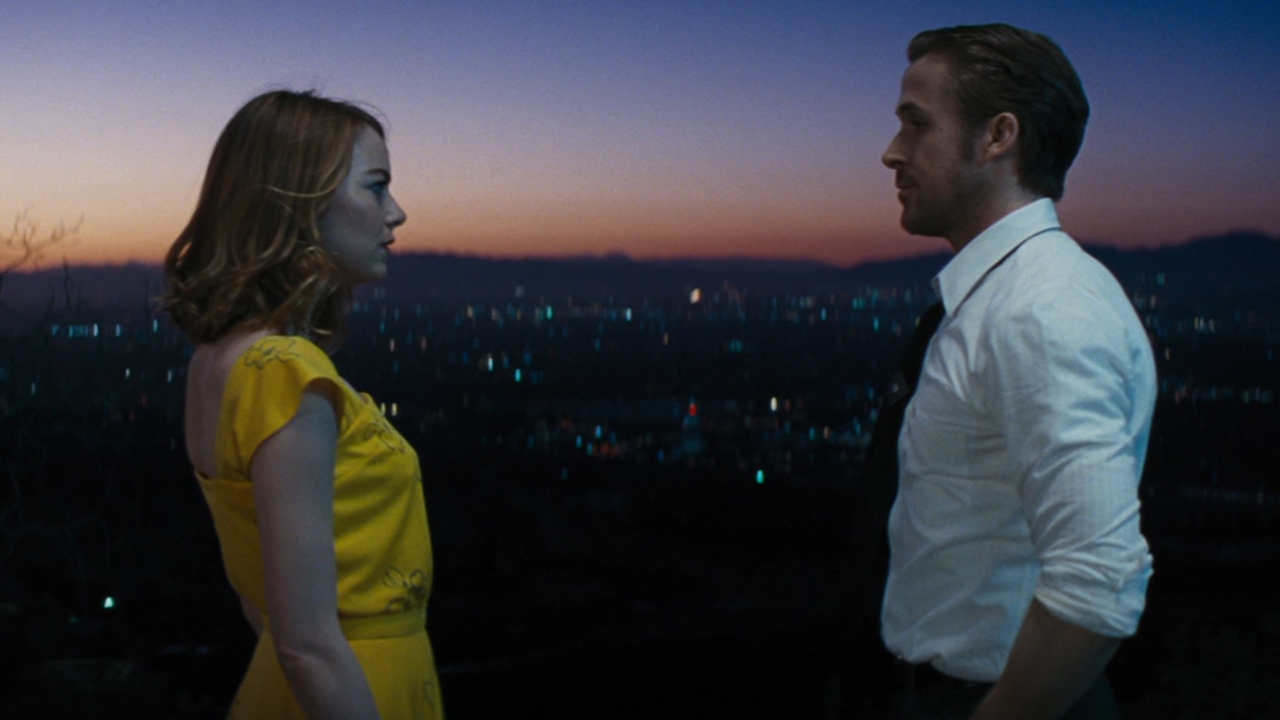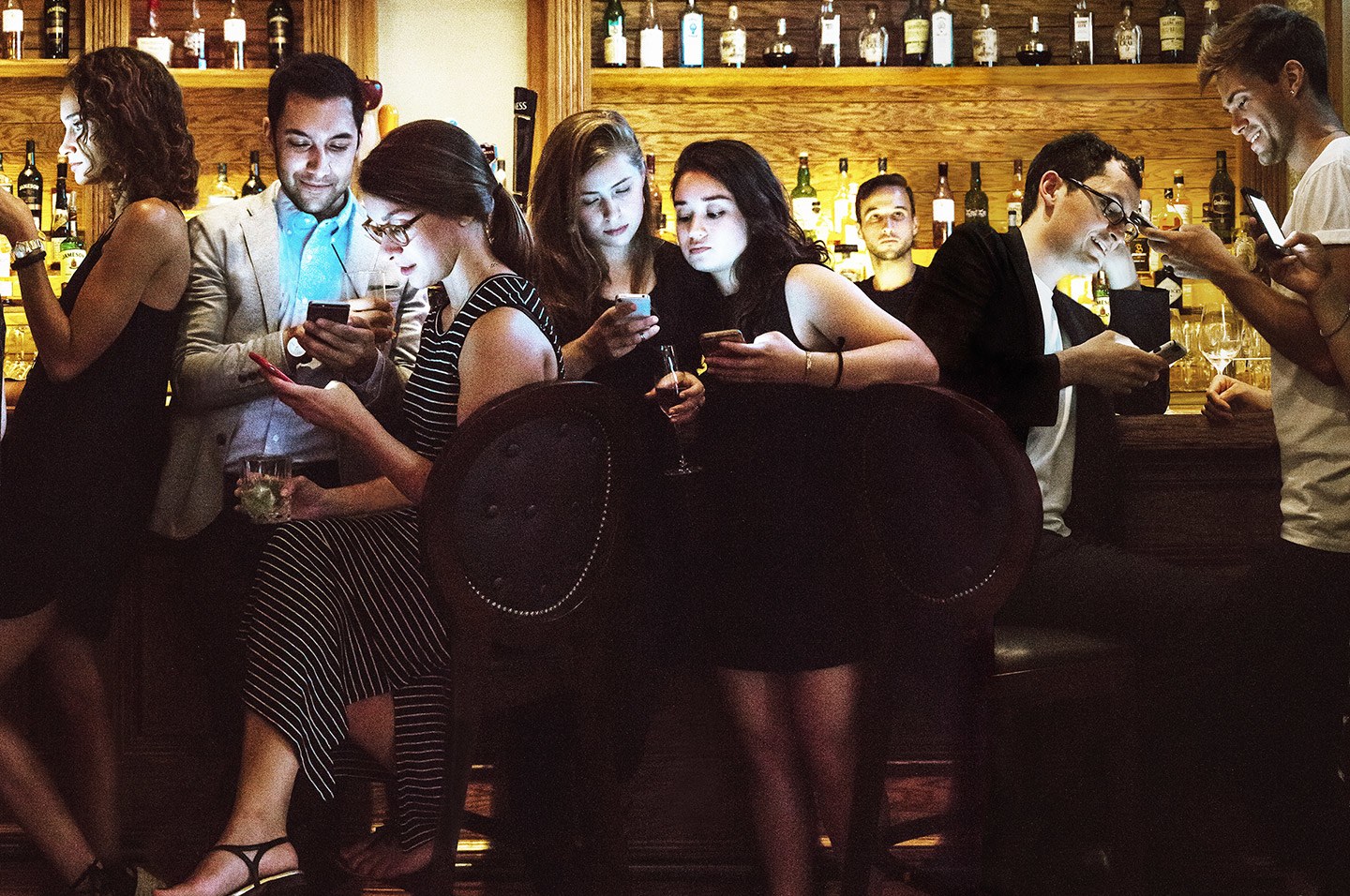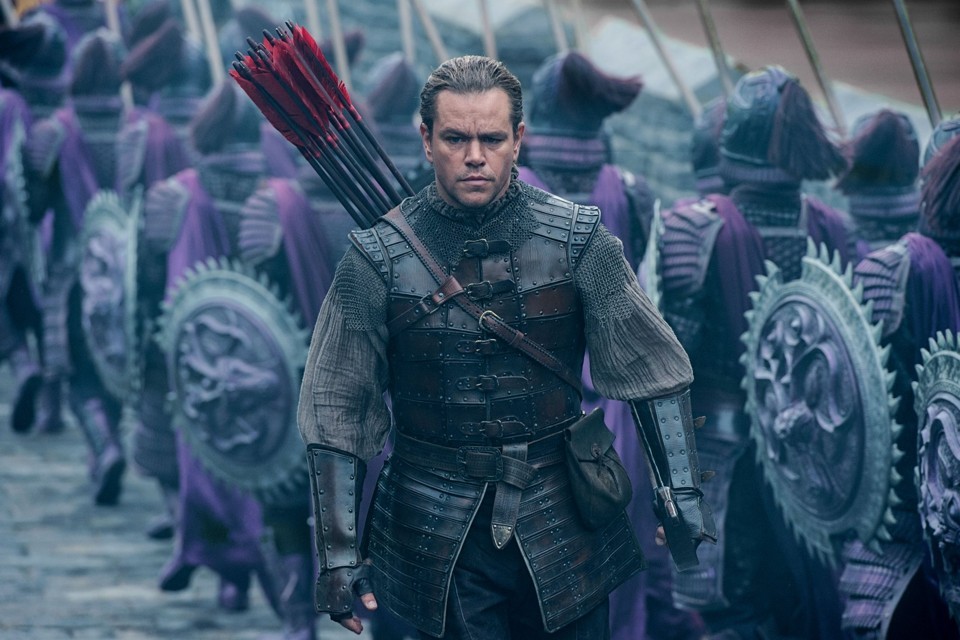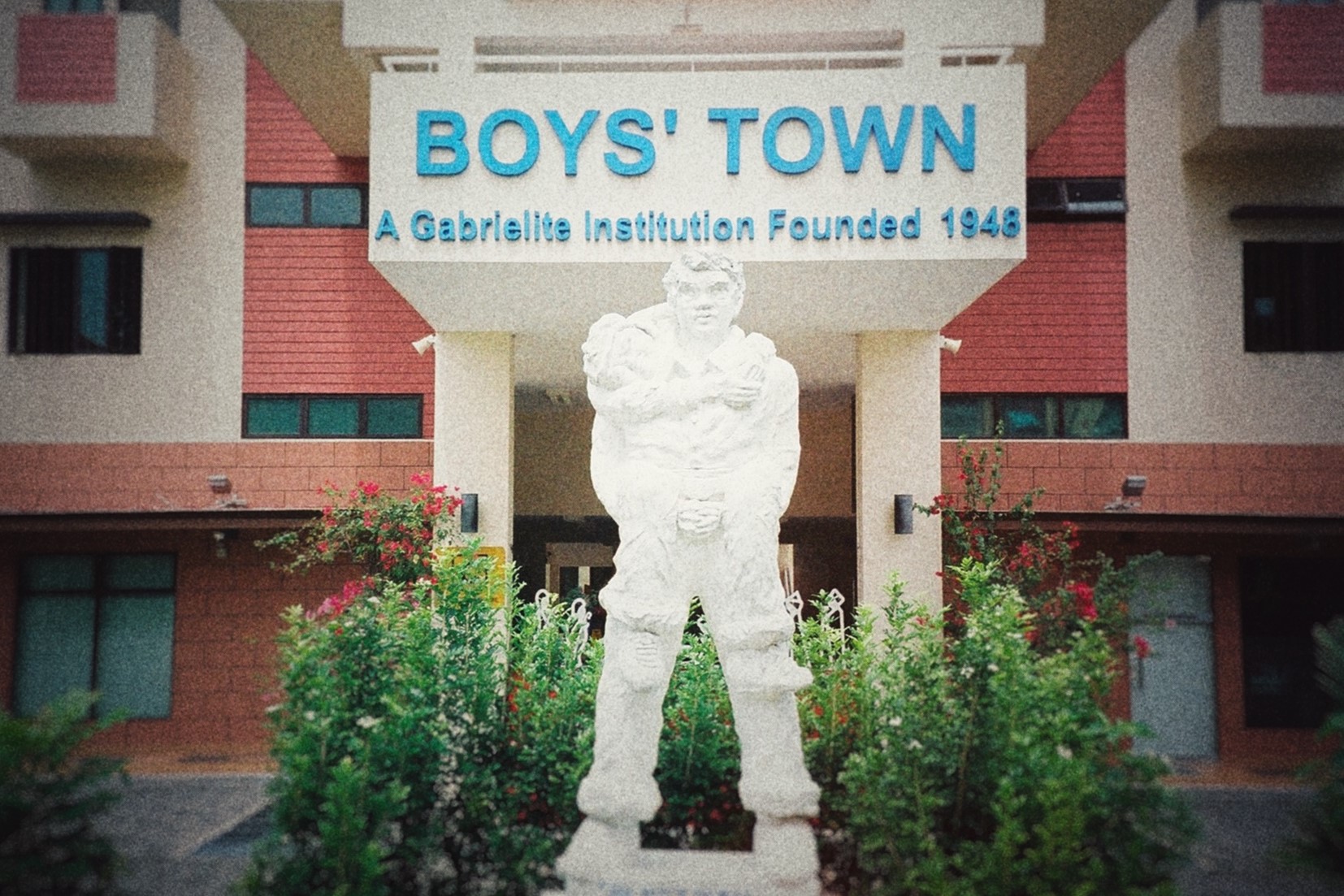Call it a love letter to Los Angeles, an ode to starry-eyed dreamers, a revival of Golden Age Hollywood glam - La La Land checks all of those boxes and then some! The film is bursting at the seams with colour and whimsy, but at no point during the brilliantly choreographed musical numbers between Emma Stone and Ryan Gosling does it feel anything short of genuine.
Like all good movies, behind the dazzling screenplay is unexpected emotional heft. For something that promises a flight of fancy, the film manages to leave us with several life lessons worth unpacking. So if you haven’t seen La La Land yet, hit pause and head to the cinemas. Partly because it’s tipped for an Oscar, partly because Ryan Gosling is in it (hey girl) but mostly - MAJOR SPOILERS AHEAD.
Lesson 1. Chasing a pipe dream...
The premise of the movie is simple - boy meets girl, and the pair hit it off in a series of meet-cutes and meaningful glances. But theirs isn’t the only love story in the film. Both know exactly what their passions are and what they want out of life - they pursue their goals with a relentless and restless energy. Boy (Sebastian) is a old school jazz musician and self professed romantic with grand plans to open his own jazz club. Girl (Mia) is an aspiring actress stuck serving lattes on a studio lot. The film is a shout out to anyone who’s ever felt like what they love to do doesn’t exactly fit the societal mold, or that they have an end goal in mind but no idea how to get there. There are few career paths more murky than being successful in the performing arts - so let Mia and Sebastian’s spunky take on Hollywood inspire you!Lesson 2. … and knowing when (or if) to give up
La La Land celebrates the dreamers and the fantasies we spin for ourselves - but it’s not a red carpet journey the entire way. It’s easy to watch someone’s idealised scenario flash across the big screen as we often imagine it for ourselves in our own heads, being their best selves and living out their dreams unencumbered. But the movie weaves in elements of melancholy, acknowledging that some fantasies don’t play out in reality - most poignantly when Mia’s ambitions are shattered as her one-woman play is poorly received. It’s an unwelcome reminder of reality and our own shortcomings. The issue isn’t laid out in black and white; the need to be realistic and make ends meet war with the shoulda-would-couldas throughout the film. La La Land doesn’t provide the answers, but it does show that it is 100% okay to feel in doubt.Lesson 3. Personal versus romantic love
Fasten your seatbelt folks, because this is where the real spoilers happen. In the film, viewers are fed this bittersweet grain of truth: love and career don’t always mix. Relationships are give and take, and when both parties have ambitions that involve copious amounts of time, energy and distance… well, sometimes you honestly can’t have both. It’s a low key kick in the gut for all the uber romantics lured to watch by the promise of song, dance and a little romance. La La Land has all the makings of a cosmopolitan fairy tale, and this is the one thread that grounds the film and keeps its characters genuinely relatable - a melancholic sense that as good as they are together, Mia and Sebastian may not achieve what they set out to if they remain a couple.Lesson 4. Time and place
Many of the film’s most beautiful moments happen as brilliant choreography, charismatic leads and the twinkling lights of LA collide. But what resonates the strongest are the final 15 minutes of the movie, where we are treated to a montage of what is and what could have been - the perfect combination of whimsical and wistful. Mia and Sebastian were undeniable #couplegoals, pushing each other to fulfill their respective ambitions and providing solace when things didn’t pan out. They were instrumental to each other’s success and exactly what the other needed at that point in time. But as we all well know, times change. What made you happy once may not make you as happy now. You may have multiple great loves in your life but it doesn’t make any of them lesser. La La Land is an ode to dreamers, to the wild and fantastical plans we have for ourselves and sometimes, that we share with others. It also recognises life’s ability to knock us off course from time to time, and that’s where the movie really comes through for us. Instead of making it feel dull and tragic, it makes it all appear extraordinarily okay. <a href=" Image CreditThe open concept office has made its presence very much known in the workplace today. Where it used to be just startups adopting this style of working, in more recent times, corporate firms too have begun adapting to this change.
THE DEATH OF CUBICLES
Cubicles, that once defined the workplace, are a concept of the past. They just weren’t for everyone. People began to realise that cubicles were restricting the "creative flow". Co-workers just weren’t communicating or collaborating with each other. On the outside, it seemed like the perfect idea. Getting rid of walls improves workflow and communication between co-workers. You no longer feel like a captive, stuck within the walls of a cubicle 8 hours a day. It’s an ideal collaboration hub, right? But one major loophole in the open concept office has been neglected. While the open concept office may increase communication and collaboration, it takes away personal productivity.LESS WALLS = MORE DISTRACTIONS
Sitting here in an open concept office right now, I am triggered by almost 5 different noises. These noises are nothing more than distractions to me. There's the two guys behind me conversing ever so loudly, my friendly co-worker next to me typing furiously, or the guy two seats away munching on his food. Never mind the fact that you’re constantly aware of the movement and footsteps around the office.THE INTROVERT’S NIGHTMARE
My introvert friends will agree with me on this: if you’re an introvert working in an open concept office, headphones are your best friend. Just be careful not to come off as an anti-social. While the lucky ones may be able to train themselves into blocking out the noise, the open concept office is every introvert’s worst nightmare. There are enough articles written about introverts for everyone to know that introverts thrive on personal space, which evidently, the open concept office doesn’t offer much of. It only makes sense for us to want personal space if we’re going to be spending 8 hours a day seated in the same place.NOT JUST ABOUT THE INTROVERTS
The lack of privacy is a hindrance to the creativity and productivity of all workers. It almost feels like your actions are being policed because you never know when your boss or colleagues are watching you. It actually kind of reminds me of Bentham’s Panopticon prison design that forces inmates to self-regulate their behaviour. Of course, the level of intensity is a little different. The truth of the matter is, not every job is reliant on communication or collaboration that enthusiasts preach about. By no means am I implying that I’d rather work in a cubicle. But it makes me wonder if there is a middle ground between the traditional workplace and the workplace of today. A workplace for both the introvert and the extrovert - one that gives you the privacy you need AND allows room for collaboration.NEGLECTING WHAT’S IMPORTANT
I’m all for having “Google” themed offices that make it hard for workers to leave for home. Implementing fun into work with beanbag chairs, foosball tables and sleeping pods are all great ways to keep workers happy. But isn’t the main purpose of a workplace… to work? Maybe you’ve just wasted 2 minutes of your time reading this. Maybe it is all about preference. But there has to be some truth behind publications like <a href=" New Yorker, that have reported on how research shows that open concept offices reduce productivity. Until the time comes when open concept offices are a concept of the past, you’ll find me with my headphones listening to Linkin Park, or something. Top Image CreditApply a spark to tinder, and you start a fire. From its name, the dating app Tinder clearly envisions itself as a catalyst of sorts; a tool that facilitates connections and gives relationships that much-needed initial push. But, is that really what it does?
Does the digital equivalent of mass speed dating (that somehow manages to be even more superficial) really promote romance, or does it go against the very essence of romantic love? Well, yes and no. It kind of depends on you.
Digitized Disembodiment
“What the hell are you talking about? Tinder isn’t for romance, it’s for hooking up!” Okay, calm down, Kim Kardashian. I’m clearly not talking to you. Believe it or not, a great many people use the app to find love. But are they looking in the right place? The problem with apps like Tinder is that they rely on purely digital representations of the self; disembodied avatars made of carefully curated selfies and strategically scarce profiles providing just the right information in just the right amount. Like the pictures of succulent, mouth-watering burgers on McDonalds posters, digital avatars are often expressly artificial compared to their real-world counterparts, and intended more to entice than to provide an accurate representation. Ever bought a Big Mac and went, “Is that it??” as you stare at that sad mess of bread and cabbage in your hands, struggling to reconcile the reality with that glorious picture on the poster? That’s probably, like, ninety per cent of Tinder dates. Just an estimate, don’t quote me.Hello, Narcissus
It’s perfectly fine for people to want to look and seem their best on dating profiles, but when using Tinder for finding romance, such behaviour poses a fundamental problem. By focusing on self-representation, Tinder encourages users not to find love with others, but to obsess on a narcissistic love of themselves. Finding love is no longer about being impacted by or willing to change for another person. Love is now about finding someone who satisfies your preconceived notion of the type of partner you want; about finding yourself in someone else. For the Tinder-reliant seeker of love, gone are the days of awkwardly asking a girl or guy out on a date and risking rejection. You simply swipe, wait, and chat, completely free from the risk of rejection. You are given the liberty to swipe hundreds of people, but never put yourself at risk of humiliation when you get shot down. Gone are the days of finding out more about your date after meeting them. You only agree to go out with the person when you’ve decided that your digital interactions and representations of yourselves match well enough to warrant meeting. We fall for digital simulations of others before we ever shake their hands. In place of the trial and error that once defined romance, Tinder provides us with an almost scientific approach to dating. Enter data into an algorithm, wait for someone to match that algorithm, collect preliminary findings, THEN go on a date. The scientist in me wants to approve, but this approach to love can only ever lead to dissatisfaction. As much as we want someone with the same interests, beliefs, and dislikes, scientifically, it’s just not possible. Due to the sheer number of variables, there is almost no way to find the “perfect” partner completely complementary to you. The belief that we can precondition love is a destructive fantasy that leads to people focusing on finding the “right one”, instead of being the right one for someone else. “This girl seems nice. Oh wait, she likes K-pop? NEXT!” Well, maybe you should stop being a judgmental little shit, you swipe-happy monkey.Don’t blame your tools
As with any other technology, dating apps like Tinder can only be as good or bad as the people who use them. There is nothing in Tinder’s terms of service that states that you have to behave like a narcissistic judgmental prick when you use it. Sure, the format and design of the app lends heavily to and even encourages such behaviour, but the thumbs that touch those screens still belong to you. Tinder can only kill romance if we use it in such a way that allows us to exclude and filter out potential partners who threaten to challenge our precious notion of self. Because love is an experience that persists and flourishes not just in spite of, but because of hardship and differences. So next time you think about swiping that random girl left, think about giving her a chance. She might turn out to be an air-headed bimbo, she might look as much like her picture as a bad Big Mac. Or, she might just surprise you, if you keep an open mind. <a href=" Image Credit2016 was universally a pretty crazy year. We have exclusionary and bigoted rhetoric legitimized in the West, a controversial war on drugs in the Philippines, a staggering death toll in Syria, an impeached South Korean president, and the untimely passing of pop culture icons like Carrie Fisher.
What the year did bless us with, however, apart from new Beyoncé and Gaga albums (YAAAAS), is an abundance of memes to help us grapple with the chaos 2016 relentlessly piled on our fragile minds.
Yes, memes.
While “studying” in my university library, I often find myself mindlessly scrolling through memes on Instagram and Facebook. For many, sifting through hordes of these posts has become as regular as checking for new WhatsApp messages. It’s about time we sit down and evaluate why memes are so addictive to begin with.
They are ridiculously relatable.
It’s safe to say that there are memes out there for everybody, whether you are a wine-chugging single mom of two or a procrastinating high school student. In particular, the latter half of 2016 gave birth to a slew of memes featuring Kermit the Frog in a face-to-face confrontation with his evil, hooded alter ego. This pair quickly became the icon for anything that has to do with giving in to our temptations, ranging from breaking a diet to sleeping with someone who’s off-limits. Kermit’s new meme depicts a literal reflection of the self, but most of the time, all memes actually aim to mirror different aspects of our lives, no matter how mundane. I often find myself chuckling at the surprising discovery that yes, I am not the only person in the world that thinks about eating pizza and mozzarella sticks in church. (Yes, that was a meme).They bring people together.
My dictionary defines memes as “a humorous image, video, piece of text, etc., that is copied (often with slight variations) and spread rapidly by Internet users.” And no, this ‘spread’ isn’t just the casual, impersonal click of a button. When I moved to Singapore from my hometown of Manila, I initially found it difficult to keep in touch with old friends from high school who likewise traveled to other corners of the globe for college—that was, until the recent explosion of memes. My close friends and I rarely keep in touch via long, thorough conversations on Skype. And yet, it’s hard to feel the distance when we’re constantly tagging each other in memes that make us nostalgic about our stupid high school days. The best ones always involve smuggling food into a classroom or being the only sober ones at a party. Ensue the comment: “LOL that’s so us”.They keep up with the times.
One of the reasons memes will never get boring is that they constantly renew according to real-time political or social contexts. As a result, some of the most pressing moments of 2016 could momentarily be viewed in a humorous and (almost) positive light. When Donald Trump was officially announced as the President-Elect of the United States, social media outlets were flooded with memes featuring the adorable bromance between President Obama and Vice President Joe Biden, where the latter would be depicted as hilariously petty and/or sentimental. Harmless jokes about Melania Trump’s infamous plagiarism also emerged, albeit alongside problematic slut-shaming judgments about her background. Netizens all across the world were soaking these up with glee—this was the Internet’s way of coping. While seemingly trivial, memes are artifacts of pop culture that can both reflect and impact the sentiments of their viewers. Memes are intricately connected to both banal and essential day-to-day happenings, packaging the otherwise neglected realm of politics (and other things that require brainwork) into bite-sized pieces for the general public to enjoy and share.They remind you to take yourself less seriously.
Perhaps most importantly, as a combined by-product of all of the aforementioned factors, memes can heal—even if in just the most superficial ways. I find myself drawn to memes that tap into some of the most relatable flaws: being unable to finish work on time, failing to resist sending that f*ckboy another text, and sometimes, not being able to get up in the morning because life can feel a bit overwhelming sometimes. These simple photo-caption bundles remind me that there are people out there who go through similar motions in life, albeit to varying degrees. It’s the solidarity endowed by all this Facebook tagging that puts a transient Band-Aid on the internal chaos. Memes provide the space for us to laugh through the pain, or at the very least, concretize the struggles that we never bothered to caption before. So as 2017 steps into the picture, I look forward to getting distracted from my study time by tags in more posts about gaining weight over the holidays and not having anyone to kiss on New Year’s Eve.https://www.facebook.com/Urbanites.co/posts/1785642571685041
<a href=" Image CreditThroughout the past couple of centuries and more, society has shifted from idolizing one group of people to another. In the late 19th and early 20th Century it was the scientist and inventor; in the Roaring Twenties it was the young and independent; in the 40s and 50s it was the soldier; in the 60s and 70s the businessman and stockbroker; in the 80s the rocker, and so on.
Today, one can (and in my case, will) argue that the “in-crowd” of the moment is that of the introvert.
Introverts might hate being in the spotlight, but like it or not, the spotlight is exactly where they’re in.
BOOKS, QUIET, SOLITUDE, RAINY DAY, ETC.
Unless your internet has been out for the past decade (maybe you use Singtel, or something), you must have realized that digital media abounds with respect for the archetype of the introvert. We have this image of what an introvert is, and spout volumes of rhetoric about their virtues. The introspective intellectual; the bookish loner; the quiet party-hater; the lone wolf in his fortress of solitude. Take a hike through the myriad introvert-centric articles of the elitedaily’s and thoughtcatalog’s of the net and you might find that our image of the stereotypical introvert has gotten so specific and extreme that it can only be described as caricature. While many of us identify in some way as introverts, many of us also identify in certain ways with characteristics of the extrovert. Regardless, whether you consider yourself an introvert, extrovert, or ambivert, it is important to realise that introversion-extraversion is not a binary. The vast majority of people fall somewhere in the middle of the spectrum, exhibiting both introverted and extroverted traits to varying degrees. Not all introverts are smart or shy, and not all extroverts are boneheaded jocks or basic bitches who hate books and meaningful conversation. However, many an internet article waxing rhetoric on the shrine of the introvert seems subscribed to the notion that the traits commonly associated with introversion are exclusive to and inextricable from introverts. Come on, guys. You know it’s not that simple.PRODUCT OF TECHNOLOGY
In her article titled The Introvert Fetish, Whitney Erin Boesel asserts that beyond internet articles and blogposts pandering to the sensibilities of the introvert, the introvert craze we are in might actually have begun as a response to the invention of the internet. With the advent of the world-wide web and the advancement of communication technology, we began to witness an unprecedented level of superficiality in our communications. We realized that in many ways, communicating on the internet resembles our typical ideas associated with extraversion. Messages are short and shallow. Articles are a fraction the length of their printed counterparts. Social media interactions are touch-and-go. Like our constantly ringing smartphones, extroverts never shut up. Like our Facebook accounts, extroverts have far too many fake friends. Like extroverts, online communication lacks depth and authenticity. Because of this, we have gravitated away from the innate superficiality of cyberspace, towards a pursuit of real-ness, hence driving us into an appreciation of the characteristics of introversion, to the point of “fetishism”. Ironically, while the internet may be a haven for introverts and their self-praising fans, the decidedly un-introverted characteristics of online communications may be exactly what birthed the introvert craze in the first place. Or, as Boesel puts it, “Actual introverts may have a particular affinity for the Internet, but the Internet itself becomes an extrovert.” As a way of pushing back against the perceived hollowness of digitally mediated experiences, Boesel believes that we as a society have invented the introvert fetish in an attempt to reconnect with a sense of offline authenticity and meaning, even while staying constantly connected to the internet. We want to call ourselves introverts, because we want to believe that we are genuine and "real", while we flood ourselves with all the fake, superficial nonsense of the internet and social media. What do you think, dear reader? Do you identify as an introvert? If you do, how do you feel about the constant barrage of media sucking up to the stereotypical introvert by portraying a caricaturized version of you? Do you think the introvert craze is a positive movement towards the acceptance of introverts in a traditionally extrovert-dominated world? Or is it simply a manifestation of conservative backlash against the artificiality of an internet-augmented society? <a href=" Image CreditNo one can deny that dating has changed dramatically over the past few years. And no one can deny that courting someone has changed dramatically too. With more and more online dating apps, communication has gone from being verbal to being technological. With that, a new wave of dating terms has hit our shores, emerging from the torrential waters we call “love”.
It’s time for all of us to brush up on our dating vocabulary because we’re pretty sure these terms are here to stay.
Ghosting
Remember how Batman would always just disappear whenever Detective Jim Gordon talks with his back turned away? And then when Gordon turns back, he realises that he’s been talking to himself? That’s what ghosting is. For those of you who didn’t get the reference, ghosting is the term you’d use when someone completely stops making contact with the person they’ve been seeing, without even telling them they’re no longer interested. This often occurs because people are too scared to officially call it quits. They just, you know, become a ghost.Slow Fade
This process is similar to ghosting, but is much more drawn out. You start to reply with shorter and shorter texts, and then you start responding at a much slower pace, and finally you just stop replying. Think Batman slowly moonwalking into the darkness, or your favourite song slowly fading into silence. I much prefer the former.Thirst Trap
That photo that someone posts on social media for the sole purpose of garnering attention. You know that person who constantly posts topless photos of themselves but writes really arbitrary captions like, really craving a mango juice right now - yup, their photos are Thirst Traps.DTR
Also known as the talk. You know, the so are we like, a thing? talk. DTR is an acronym for ‘defining the relationship.’Benching
When you’re just not good enough to make first team but exist as a secondary option. Benching occurs when someone you’ve been seeing stops wanting to see you in person but continues to communicate with you over social media. This probably happens when they feel like they have other options to explore and play out first, before committing to you.Haunting
The ghost is back. But instead of trying to rebuild severed ties, they’ll haunt you by only passively interacting with you- following you on social media and liking your posts.Catch and Release
This refers to the tactic used by someone who loves the chase a lot more than the endgame. As soon as they’ve caught their target, they end the relationship.Tuning
When they like you but are too shy to tell you. And so, they end up being unclear and vague in their interactions and texts. Tuning can be sweet, albeit mighty frustrating.Ship
To ship a relationship means to approve it.FBO
Now, this is a biggie. Going FBO will solidify any blooming relationship. Short-form for ‘Facebook Official’, this is #relationshipgoals at its peak for many. In this day and age, nothing legitimizes a relationship like changing your Facebook About section to reflect your not-so-single status. That wraps up this list of new dating lingo. Got any more to add to the list? Let us know in the comments below.2016 is the year that keeps on giving, isn’t it? And when I say giving, I mean taking repeated dumps on our collective faces.
On Tuesday morning, Carrie Fisher, best known for her iconic role as Princess and General Leia Organa in four Star Wars movies, died following a heart attack. She was 60.
Today, we mourn the loss of a woman many of us came to know through her iconic work, and honour all the ways her actions helped to make the world a little bit better.
Princess, General, All-Round Badass
When honouring the legacy of Carrie Fisher, is there any other way to begin than with Star Wars? It is the reason we know of her, after all. First released in 1977, Star Wars wowed moviegoers everywhere and forever changed the landscape of the film industry. Who can forget Fisher’s first appearance in that movie, as a hologram message to Obi-Wan, and Luke’s fitting response? “Who is she? She’s beautiful!” She is indeed. In a time when actresses were usually relegated to roles as damsels and love interests, Carrie Fisher’s Leia provided audiences with a refreshingly out-of-the-box take on the female protagonist. A capable leader and fighter for the Rebellion, Leia gave us a compelling female character in a film trilogy that was essentially a big-budget teenage boy's fantasy. By portraying a strong woman in power, Fisher added positively to the growing feminist movement, and shone as an inspiration to girls everywhere. Leia may have been a fictional character, but her impact on the landscape of film and gender issues was very real. And don’t lie, you squealed at least a little bit when you saw Carrie Fisher in 2015’s The Force Awakens. To know that we will never again see General Leia Organa portrayed by Carrie Fisher is a depressing thought for every Star Wars fan. Following the onscreen death of her husband Han Solo, the inevitable departure of our favourite general-princess in the ongoing saga will undoubtedly be an emotional moment for many in the theatre, especially with the added weight of the actress’s real-world passing.Fighting Mental Illness and substance abuse
A side of Carrie Fisher many of us didn’t know about was her struggle with bipolar disorder and drug use. While those struggles themselves don’t in themselves make her special or worthy of notice, what does is the way she chose to approach them. Throughout her career and life as a public figure, Fisher had been completely open about her issues. She admitted openly to abusing cocaine and prescription drugs during the filming of Empire Strikes Back, saying in 2001, “Drugs made me feel normal.” She even starred in a solo play Wishful Drinking, chronicling her battle with addiction. Writing for The Guardian in a column titled advice from the dark side, Fisher provided candid and honest advice to readers suffering from mental illness, writing in a compassionate and self-deprecating fashion that alluded to her literary skill as an author of multiple novels. In a society where many suffer in silence from mental illness due to the stigma attached to it, the positive impact of a public figure like Fisher coming out as bipolar without shame cannot be overstated. Mental illnesses are caused by chemical imbalances in the brain, and that's it. These people aren't broken or weak. Their disorders don't indicate problems with their character, but with their health. As with any sickness, sufferers of bipolar disorder, depression, or any other psychological disorder need to realize that it's okay to seek help and treatment. With her actions, Fisher embodies the courage and determination it takes to accept and tackle mental illness in a culture determined to discriminate. With her unabashed attitude towards mental illness, Fisher championed acceptance and brought us a little closer to a world where victims of mental health issues can seek help without fear of judgment or persecution. For that, she deserves our respect. Like Leia, Carrie Fisher was strong, bold, and unapologetic. She will be missed. <a href=" Image CreditSince Hollywood realised the Chinese was the audience to make profits from by virtue of sheer numbers, there have been numerous cringe-worthy attempts to make many of its big blockbuster offerings more "appealing" to China.
There is the China-exclusive version of Iron Man 3, where Tony Stark decides to go to China for a medical operation to remove the shrapnel in his chest, an operation performed by Fan BingBing in a doctor's costume. She is never brought up again for the rest of the film.
And who can forget Michael Bay's Transformers: Age of Extinction, with its blatant Chinese product placement in the middle of Texas, or the final battle in Hong Kong where the Beijing government vows, "The central government will defend Hong Kong at all costs!"
Finally, you have the shiny Chinese base on the Moon in Independence Day: Resurgence, relevant for a grand total of 20 minutes in the 2 hour-long movie, before the alien mothership blows it away like it is some annoying fly, after which it is promptly forgotten.
Such attempts reek of laziness and ignorance. Most of us Chinese viewers cringe at what we see as a blatant propagation of Asian stereotypes, something that further, seems to indicate that movies must be stripped of artistic merit and be severely dumbed down in order to appeal to an 'Asian' audience. C'mon, give us more credit than that.
But to blame the Privileged Straight White Men of Hollywood alone for this gross cultural misunderstanding is unfair; it's worth noting that these films were backed by big Chinese corporations. In fact, Transformers even got sued by a Chinese company because its product did not end up in the movie. What is happening here, then is the erection of a Great Wall of ignorance, built by parties on either side of it, where one side believes that as long as the wall is appealing enough for the other side to want to pay to see it, all is well and good, regardless of how tacky and gaudy it is.
A Rainbow Wall of Cliches
Enter Zhang Yimou's The Great Wall. Let's take a moment to remember that this is the same director who also gave us Ju Dou, Hero and House of Flying Daggers. Like all of these films, Great Wall is rich and vivid with colour. The troops are blue, red, yellow, purple and black. The Tao Tie are green, while the dullest and least well-dressed characters are the few Europeans. There is Yimou's fondness for panoramic shots, so we are treated to the scenes of battle in all their explosive, gory glory. There are uniquely Chinese moments, like the release of lanterns into the sky when a general dies, so they resemble the faint band of the Milky Way. All of this almost makes for a refreshing change of pace, until you realise the plot is essentially a rip-off of Independence Day--both 1996 and 2016--and Aliens. Horde of monsters (Tao Tie) that devours everything in their path? Check. The devouring is for the nourishment of the Queen, to breed more monsters? Check. Extraterrestrial origins because they were released by a meteor? Check. Killing the Queen ensures the defeat of their entire species? Check. For all it appears superficially, Great Wall is essentially an archetypal Hollywood alien invasion movie dressed in Chinese garb, complete with all the requisite cliches, down to the attack on the Capital City. If American audiences were hoping for a unique twist, they would be sorely disappointed. Perhaps Zhang has decided that the only way Americans can be comfortable with Chinese culture is through a familiar plot that targets their sense of patriotism. Adding to this is the issue of Chinese characters being flat to the point of being a bore. Everyone is so dedicated to defeating the Tao Tie that there is no disagreement on how to do it. Sure, everybody has xing ren (trust) in one another, but it seems the only thing that distinguishes the soldiers from one another is the colour of their armour and the role they perform in battle. There is no drama and no disagreement in tactics whatsoever. At least the US President fired his Secretary of Defense in the first Independence Day. The characters are as dull as their armour is bright. If this movie was supposed to let the wider world appreciate Chinese culture, the only thing I've learnt is that the Emperor is essentially useless. In fact, that this film <a href=" Chinese elements in it", as Zhang himself says, is utterly irrelevant to the plot, as alien invasions are pretty much the same everywhere, regardless of country or time period. The only cliche that Zhang avoided was the use of Matt Damon as the White Man who Saves Them All. Damon's character's discovery of the means by which to defeat the Tao Tie is accidental. He does not do any of the planning to engage the Queen, he follows the orders of the Chinese generals and his attempt to kill the Queen fails--twice. In the end, it is Jing Tian who does it. Criticisms of whitewashing then, in this case, is not quite justified. Rather, it is the artistic merit of the film that is questionable. As far as invasion-type storylines go, it simply doesn't add anything new or fresh.Crossing the Wall
If Great Wall has only added on then, to the huge wall of cultural misunderstanding between China and Hollywood, can it ever be overcome? The answer is yes. In fact, it has already been done, specifically, by the film Rogue One. Donnie Yen and Jiang Wen's characters are fully integrated into the storyline. Their feats of badassery fit well into the overall aesthetic of the film. They have enough narrative presence to be significant and their actions have direct consequences on the other characters. The result? An added measure of thrill for us Chinese movie-goers, seeing ourselves represented in a film that is fun, enjoyable and also highly regarded; it sends a message to non-Chinese viewers that we are just as capable of quality acting and art. Great Wall on the other hand, in conjunction with all the atrocious examples I've mentioned earlier, epitomizes how cultural appeal simply cannot be forced. Randomly inserting Chinese scenes into huge blockbusters or setting an entire Hollywood-type blockbuster in Ancient China, for the matter, only results in terrible movies limited in artistic merit. Not only that, but it insults the sensibilities of both Western and Chinese audiences, ensuring that each side thinks the other incapable of enjoying actual art. In addition to Hollywood's whitewashing and diversity problem, this side of the Pacific also needs to be aware that the Chinese audience is smarter than they think. Top Image CreditChristmas is a special time for most of us. Those of us working and studying abroad, and those of us who’ve moved out of our parents’ houses return to the place we grew up in to spend the holidays with loved ones. The season isn’t just a time for reunions; it’s also a time for homecomings.
Our houses are dressed with seasonal decorations and are filled with the smell of home-cooked food. There are wreaths on the doors and presents under the tree, roasted meats on the dinner table, and maybe even a pie or two for dessert, baking in the oven. Though traditions may differ from home to home, one thing remains constant: sharing and experiencing these traditions with family.
But not everyone gets to be in the warm company of their own family during Christmas time—certainly not all the boys who reside in Boys’ Town.
While most of the boys return home for the holidays, every year, without fail, there are about ten to fifteen who remain. Problematic familial situations prevent them from truly having the year-end break most of us experience.
Year after year, come November, the compound empties out, leaving the boys’ dormitories predominantly vacant. Belongings that are left behind are neatly stacked away into the corners and cupboards of the rooms. The campus is so quiet that when walking through, one can only hear the rustling of the leaves on the trees surrounding the campus in Upper Bukit Timah. The mainly unoccupied grounds definitely amplify the sympathy one feels about the situation some of these boys are in.
Festivities are in order
Life in Boys’ Town may come off as fairly regimented to some. The doors of each room list the roles each boy holds, like Dorm IC or Toilet IC. They have daily morning “Dorm Inspections” and at night, after “Lights Out,” no technology is allowed—similar to National Service. However, even though regimentation seems to almost define the boys’ lives, one can see why discipline is such an important tenet for the Boys’ Town institution. The fairly structured life lends itself to instilling in the boys the important values of accountability, diligence and teamwork—values that are not only representative of the home’s Catholic history and foundations, but also that of a well-grounded, righteous individual. Admittedly, daily life for the boys does seem to be a mundane, slightly restricting one. Looking at the dormitories and hearing about regulated routines, one’s brain might conjure up horrific images of bleary-eyed boys climbing out of bed at the break of Christmas dawn, to clean their rooms as a Duty Officer berates them with orders and insults. It’s hard to imagine how that life could be enjoyable; it can be difficult to understand how the boys could be happy living such a structured life, in such a structured environment. The true picture, however, is quite different. During the year-end holidays, the Boys’ Town staff members plan a variety of activities for the boys to take part in. They do anything from taking them outdoors to hike up Bukit Timah Hill to something as simple as going out to makan. The programme members and supervisors (the division in charge of coming up with activity ideas) try their best to keep these boys occupied and in good spirits. During this year-end break, they will be taking a trip to Universal Studios. One of their mid-day activities this holiday includes sending out Christmas cards. Sitting in small circles around the room, the boys systematically fold Christmas cards and insert them into envelopes. These cards, bearing well-wishes for the festive season, are meant for the people and organisations that frequently donate money to the institution. It is not quite the factory-style affair it might sound like. Rather, it is a fairly jovial activity. Some of the boys laugh and joke as they fold the cards and others run around, playing with each other. Staff members sit amongst them, talking with them, helping them out. The room is lively, and there isn’t an ounce of sadness or loneliness to be felt. Boys’ Town isn’t what we all might think it is. It isn’t gloomy, it isn’t grim and it isn’t a harsh, military-like institution. What it is, is a haven. It’s a place for boys to go to, to get away from their troubles; a place to learn and to grow in an environment that doesn’t stifle but instead, encourages and facilitates.A Conversation With L, A Boy At The Town
L (not his real name, but a nod to his favourite character in the Japanese anime, Death Note) is one of the boys who has spent the last few year-end holidays and Christmases in Boys’ Town. He stays because his family situation is not good and so, he rarely gets the chance to go home. 14-year-old L’s interests are varied and diverse. He plays the guitar and drums. He reads anything under the sun, from science books to fiction and he actively trains for and takes part in triathlons. He likes being by himself because he much prefers a quiet environment. He’s a pretty chill boy through and through and he’s just like any of us were when we were that age. If you were to speak to L, laughing along with him as you both crack jokes, you’d forget that while you’ll be returning home to family at the end of the day, he’ll be staying on at the Boys’ Town dormitory, away from his. You’d forget that he won’t be celebrating Christmas in his own home. But his nonchalance and easygoing personality masks these seemingly unfortunate circumstances. He doesn’t seem to mind that he’s not going back for Christmas and the holidays, and he doesn’t seem to mind that his family situation is complicated. This quiet acceptance and contentment is not only present in L but can be felt throughout the premise of the Town. What makes the atmosphere in this place so uplifting is the constant attention and support the staff provides to its young residents. The boys here have learnt something very valuable: that the bad things in their lives don’t have to define them. They may not be able to explicitly spell that out for you if you asked them, but you can tell that they have a positive outlook from the way they live their lives. They take each day as it comes, and enjoy each moment that unfolds before them. Boys’ Town does more than shelter troubled boys. They aim to give the boys a home—a place to belong. They show them that there’s more to life than a rough upbringing. Like L, who dreams of competing in overseas triathlon competitions and of one day becoming an Aerospace Engineer, these boys are taught and shown that their experiences, their memories, their disposition and their character come from within and don’t necessarily have to be shaped by the homes they come from.A Merry Christmas At Boys’ Town
This goal of Boys’ Town carries into Christmas, and the staff of Boys’ Town intend not to glorify and oversell Christmas, but to simply commemorate the meaning of the holiday. On Christmas day, they cater meals for the boys, organize games and performances and even have a gift-giving session. Christmas in Boys’ Town is a simple affair. According to L, the boys wake up at their regular “holiday time” of 8.30am, do their daily morning chores and take part in the few activities organized by staff members. But there’s nothing wrong with simple. In fact, life in Boys’ Town seems very simple, and yet this produces joyful, happy boys—all with concrete and impressive aspirations and dreams. Christmas to them seems like any other day; there are no expectations. But that also means that they remain content, satisfied and happy throughout the holiday season because they don’t get disappointed. After seeing how the boys in Boys’ Town live, you realise something very important: the simpler things are, the easier it is to pay attention to the important details, because those details don’t get lost. In Boys’ Town, the simplicity of Christmas and the simplicity of daily living, for that matter, ensure that these important details never get lost. The boys know that during Christmas, they must be kind, they must be compassionate and they must be generous to one another. And beyond Christmas, the boys know that even though they might not be able to change where they come from, they are free to decide how big a role it plays in shaping their mindset, and more importantly, their character. Special thanks to David Lim (Head of Residential Services) and Andrew Ee (Assistant Manager of Community Partnerships) at Boys’ Town for their hospitality and help, and also to L, for sharing his story.Grammy nominations for 2017 have just been unveiled, and as expected, Adele’s record-breaking 25 is a key frontrunner for a number of major accolades, including the coveted Album of the Year. With two consecutive albums each selling more than 20 million copies across the world, Adele is by far the most successful musical act in the past four years. Gone are the days when popular culture revolved around Katy Perry and her cotton candy wig from “California Gurls” or Lady Gaga emerging from an egg-mobile in the Grammys of 2011. These aesthetic stunts, while once seen as creative and revolutionary in the peak of social media, have quickly been cast aside in favour of what can best be termed as “realism.” Adele does not use over-the-top outfits and blatant sex appeal to top the charts—the realness of her melancholia and the powerful nuance in her voice are enough.
Adele is not the only artist to embrace this low-key mode of performance to achieve mainstream success. Previously outrageous icons have shifted to “going real” in response to this emerging trend. In a promotional teaser for PRISM in 2013, Katy Perry is depicted burning her iconic pink wig, favouring a darker and apparently more “natural” image. Even Lady Gaga, a once-renowned provocateur, has decided to channel sartorial simplicity for her latest full-length album, Joanne, which unusually delves into the personal details of the icon’s family and past. The theatrical, electronic glitz and glam of Gaga’s earlier efforts have faded along with her meat dress.
In essence, there is nothing inherently wrong with this movement to a more subdued aesthetic in pop music (although, I’ll admit that I’m quite bored with the scene right now). There are a number of valid reasons for why someone might dislike all the theatricality. After all, the costumes and the convoluted video plots can make it difficult to take a musician seriously, and may distract from the product core—the music. What is problematic, however, is the prevalent perception that having a toned-down aesthetic means that an artist is more authentic.









